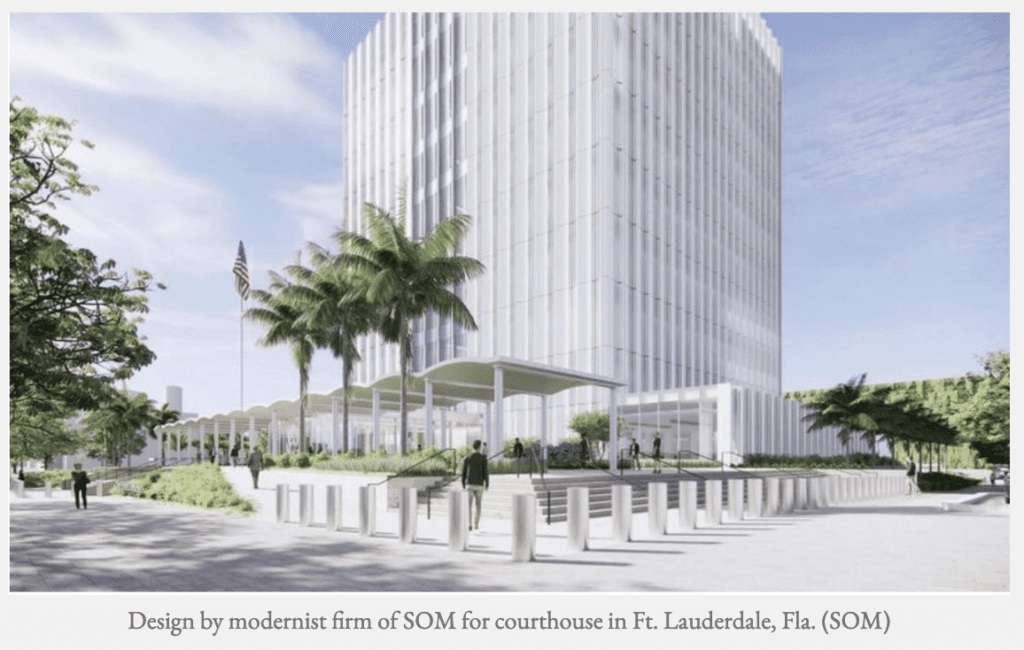Search Posts
Recent Posts
- Lifelong Learning Collaborative’s summer courses in arts, current affairs, literature, fitness and fun May 4, 2024
- Good for YOU: Try fishing – Free Freshwater Fishing this weekend May 4, 2024
- Rhode Island Foundation fellowships enable 3 local composers to focus on their music May 4, 2024
- In the news… summary on May 4, 2024 May 4, 2024
- Rhode Island Weekend Weather for May 4/5, 2024 – John Donnelly May 4, 2024
Categories
Subscribe!
Thanks for subscribing! Please check your email for further instructions.

Congress to legislate beauty – restoring dignity to American architecture – David Brussat
by David Brussat, Architecture Here and There, contributing writer
Photo, top: FBI headquarters (1975) in Washington, the sort of federal building we usually get. (FBI)
Washington, D.C., should be built in a manner that seeks to exalt Americans’ reverence for the principles of our founders, as embodied in the Constitution, the Declaration of Independence, and the Bill of Rights. Congress seeks to accomplish this lofty goal for federal buildings via legislation. There are two bills that follow the failed effort by executive order under President Trump, which was cancelled by President Biden, who added insult to injury by illegally sacking classicists in the upper reaches of the federal bureaucracy, including members of the U.S. Commission of Fine Arts, who were ejected before their legal term limits were up.
It is likely that the two bills in the House and the Senate will fail to make it into law. But the effort is meritorious whether it succeeds or not. Mandatin classical architecture for federal buildings will cause a furor not just in Washington but among architects around the country, just as it did in 2020. Even if most of the noise comes from the bills’ opponents, the fact is that they will inevitably be seen as attacking beauty.
People really yearn for something to be for. Surveys show that the public prefers classical architecture to modernist architecture by huge margins. Every time the modernists open their mouths on this issue, they score an “own goal.”
Kriston Capps’s article on the two bills at Bloomberg is a case in point. He wonders how such law would be administered, and describes a proposed courthouse in Fort Lauderdale, Fla., as “an elegant, symmetrical design for the $196 million courthouse featur[ing] fluted columns of metal and glass as well as an arcade supported by a colonnade.” It “draws on” principles of classicism with “a contemporary interpretation of Corinthian columns.” But aha! There is a drawing, the description is a lie, and what it shows (below) is far from any plausible interpretation of classicism. How should it be administered? It should be administered right into the trash can.

When the modernists say they don’t want a federal thumb on the scales of beauty, what they mean is they prefer the status quo, which places a federal thumb on the scales of beauty. Except their definition of beauty is ugliness. That is where this thumb has been since 1962, when the agency in charge of federal architecture, the General Services Administration, adopted guiding principles mandating that federal courthouses and other U.S. buildings “provide visual testimony to the dignity, enterprise, vigor, and stability of the American Government.” A worthy goal, perhaps, but it has been ignored for six decades.
War is Peace, Freedom is Slavery, Ugliness is Beauty, to paraphrase Orwell.
What we get is various versions of the FBI Headquarters in Washington, whose design is called Brutalism. With few exceptions, federal buildings have been designed using modern architecture, which generally features elements that cause citizens to snicker, and which certainly do not inspire respect. If you go back into the annals of architecture history, you will see that this was the idea behind modernism; and it is working.
The buildings that represent the American government at the local, state and federal levels have been designed for decades to undermine the values of the founders. In order to build a new society the old one must be torn down – that is the modernists’ credo. Disrespect has reached a high water mark. Appointees dedicated to promoting dysfunction in their own agencies have been chosen to run every department.
Things cannot possibly get worse. But they can get worse if our leaders will not put their foot down. That is why a congressional effort to restore dignity to American architecture must go forward. The legislation offered by Rep. Jim Banks (R-Ind.) and Sen. Marco Rubio (R-Fla.) may not make into law but it is likely to stir the national conversation. That is step one, and its about time to step up.
___
To read other articles by David Brussat: https://rinewstoday.com/david-brussat-contributing-writer/

My freelance writing and editing on architecture and others addresses issues of design and culture locally and globally. I am a member of the board of the New England chapter of the Institute of Classical Architecture & Art, which bestowed an Arthur Ross Award on me in 2002. I work from Providence, R.I., where I live with my wife Victoria, my son Billy and our cat, Gato. If you would like to employ my writing and editing to improve your work, please email me at my consultancy, [email protected], or call (401) 351-0451.
